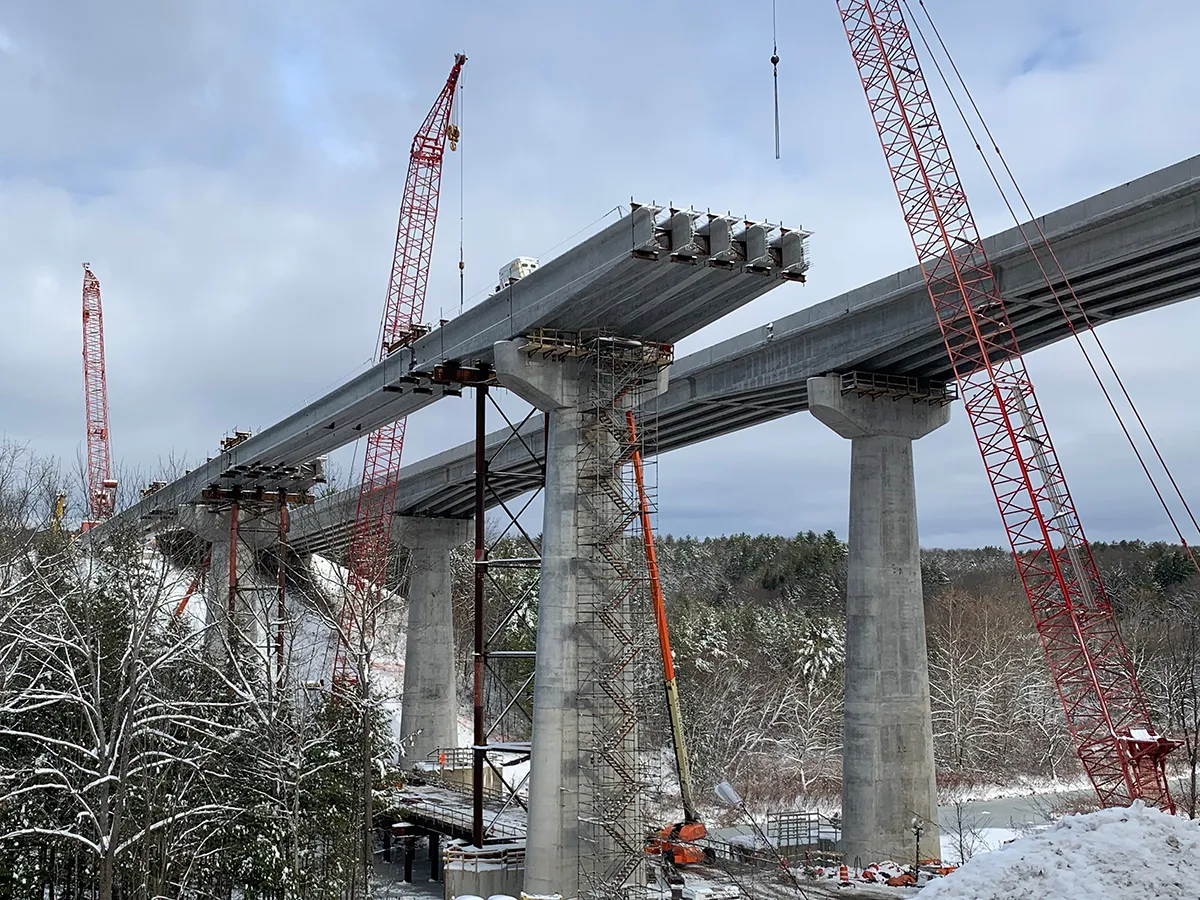The news that a key highway bridge has collapsed in the US comes as gloomy reading for all in the highway sector. When a section of the Interstate 5 Bridge over the Skagit River in Washington failed in May 2013, a number of vehicles were plunged into the river. Luckily no-one was killed in the incident on the route, which is one of the main links between the US and Canada, and the parallel bridge was able to carry traffic, albeit with delays for users.
June 24, 2013
Read time: 3 mins

The news that a key highway bridge has collapsed in the US comes as gloomy reading for all in the highway sector. When a section of the Interstate 5 Bridge over the Skagit River in Washington failed in May 2013, a number of vehicles were plunged into the river. Luckily no-one was killed in the incident on the route, which is one of the main links between the US and Canada, and the parallel bridge was able to carry traffic, albeit with delays for users. A full investigation has yet to be carried out and only once the results have been published will the cause be clear; preliminary reports, however, suggest that a heavy vehicle crashed into a key portion of the structure, precipitating the failure.
Some known facts about this incident can be stated. The bridge was erected in the 1950s and had been highlighted in a report published in 2012 as not meeting the standards required of a structure on such a major highway route. And data shows that there are more than 78,000 bridges in Washington State alone that do not meet required standards.
The issue of bridge safety in the US is not new. The collapse of the I-35W Bridge in 2007 over the Mississippi River in Minnesota resulted in multiple fatalities. This eight-lane structure gave way at the height of rush hour in a disaster that killed 13 people and injured a further 145. Built in the 1960s, the I-35W Bridge featured design problems and the weight it was carrying at the time (due to the presence of heavy construction equipment being used for resurfacing work) contributed to its disastrous failure. As far back as 1990 it had been declared structurally deficient, one of about 75,000 bridges in the country with this classification by the time that it failed in 2007.
This incident prompted a nationwide survey of bridge safety in the US, with results that came as a shock to many over the poor state of many structures. For a developed economy like the US to have so many defective bridges was suggested to be a national scandal and many politicians stood up to echo the cry, “Something has to be done.”
But as has been made abundantly clear by this collapse in Washington State, not enough has been done. Once the shock of the report into the poor bridge condition had faded from the collective memory, attention was turned to other issues. But there is no need to point the finger at the US for particular neglect of its road system either. Similar criticisms over low budgets for infrastructure maintenance can be levelled at many other developed nations in Europe, such as the UK, Italy and Germany. And an official report into Chinese bridges also revealed large numbers of bridges in the country needing replacement, with many older structures now needing replacement as they are no longer able to cope with the huge expanse in traffic volumes.
Some known facts about this incident can be stated. The bridge was erected in the 1950s and had been highlighted in a report published in 2012 as not meeting the standards required of a structure on such a major highway route. And data shows that there are more than 78,000 bridges in Washington State alone that do not meet required standards.
The issue of bridge safety in the US is not new. The collapse of the I-35W Bridge in 2007 over the Mississippi River in Minnesota resulted in multiple fatalities. This eight-lane structure gave way at the height of rush hour in a disaster that killed 13 people and injured a further 145. Built in the 1960s, the I-35W Bridge featured design problems and the weight it was carrying at the time (due to the presence of heavy construction equipment being used for resurfacing work) contributed to its disastrous failure. As far back as 1990 it had been declared structurally deficient, one of about 75,000 bridges in the country with this classification by the time that it failed in 2007.
This incident prompted a nationwide survey of bridge safety in the US, with results that came as a shock to many over the poor state of many structures. For a developed economy like the US to have so many defective bridges was suggested to be a national scandal and many politicians stood up to echo the cry, “Something has to be done.”
But as has been made abundantly clear by this collapse in Washington State, not enough has been done. Once the shock of the report into the poor bridge condition had faded from the collective memory, attention was turned to other issues. But there is no need to point the finger at the US for particular neglect of its road system either. Similar criticisms over low budgets for infrastructure maintenance can be levelled at many other developed nations in Europe, such as the UK, Italy and Germany. And an official report into Chinese bridges also revealed large numbers of bridges in the country needing replacement, with many older structures now needing replacement as they are no longer able to cope with the huge expanse in traffic volumes.









